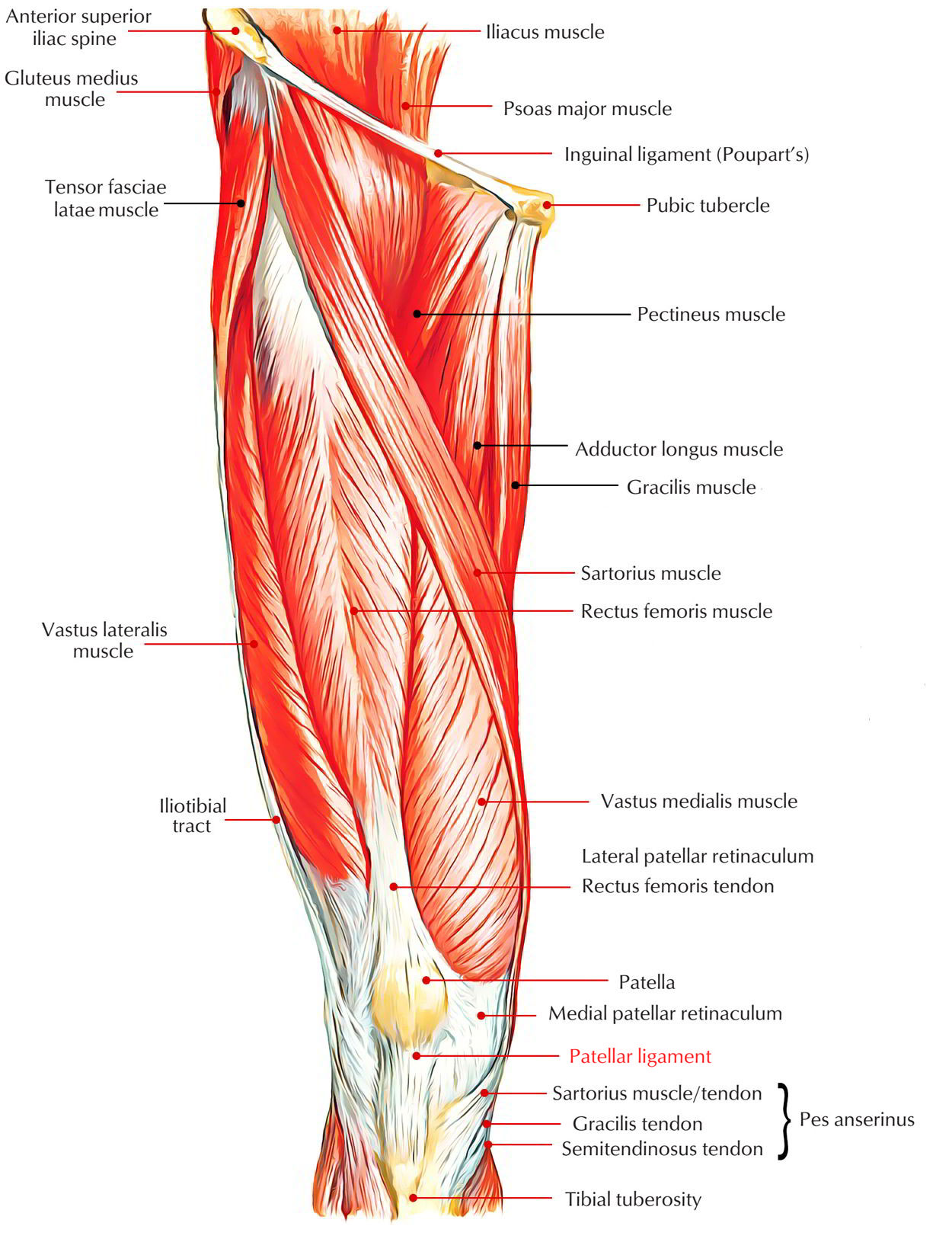The patellar ligament is a strong, flat band to whose medial along with lateral peripheries are connected, specifically, the medial as well as lateral patellar retinacula. The patellar ligament (ligamentum patella) might be considered as the distal extension of the quadriceps tendon. It elongates via the peak of the patella (the inferior pole of the patella) towards the upper half of the anterior side of the tibial tuberosity. The tibial connection of the patellar ligament is suggested on the dry bone through a smooth aspect on the upper half of the tibial tuberosity. Superficial as well as deep to the patellar ligament are, specifically, the superficial as well as deep infrapatellar bursae. The patellar ligament is roughly 6 to 8 cm long.

Patellar Ligament
Patella
The patella, the biggest sesamoid bone in the body, is rooted in the tendon of quadriceps femoris and also is anterior to the tibiofemoral junction. The patella becomes part of the knee joint extensor system as well as has an anterior side which is carefully convex forwards. It typically reveals a variety of small openings, and a couple of ridges, however is or else featureless. Its overview estimates the shape of an upside down triangle, with the peak of the bone pointed interiorly.
Location
Connected to the pinnacle of the patella and also the adjacent part of the posterior side is the patellar ligament, the inferior extension of the quadriceps tendon. Superficial to these retinacula, the medial along with lateral patellar borders get the accessories of the most affordable fibers of the vastus medialis and vastus lateralis, specifically. Connected to the medial as well as lateral borders of the patella are, respectively, the medial as well as lateral patellar retinacula.
Clinical Significance
Patellar ligament Injuries
Patellar ligament tears are rarely come across. They might happen as the outcome of deep laceration or direct injury or the ligament might burst if energetic quadriceps femoris muscle contraction all at once accompanies required suppress joint flexion.
Medical Diagnosis of Patellar Ligament Injuries
Along with either injury, lameness is extreme, as well as physical examination exposes pain and also swelling, obvious on palpation of the cranial element of the suppress joint. Patellar ligament tear leads to uncontrolled suppress joint flexion throughout the position stage, as the suppress joint cannot be elongated by the quadriceps system. Proximal dislocation of the patella (patella alta), this kind of which the patella lies at the proximal level of the trochlea of the femur, or proximal to it, can accompany patellar ligament tear, Ligaments, menisci, or cruciate ligaments in scenarios of patellar ligament rupture.

 (48 votes, average: 4.72 out of 5)
(48 votes, average: 4.72 out of 5)